On a couple of my YouTube videos since the launch of the Raspberry Pi 5 last year, people have said that for the price of the Pi 5, you should just get an Intel N100 based mini PC instead. Most cite better video encoding and decoding performance, better OS support, more memory & storage options, and additional PCIe lanes as advantages over the Pi 5. So, today we’re going to compare the two and see whether an N100 Mini PC is a better option and what the limitations of each of them are.
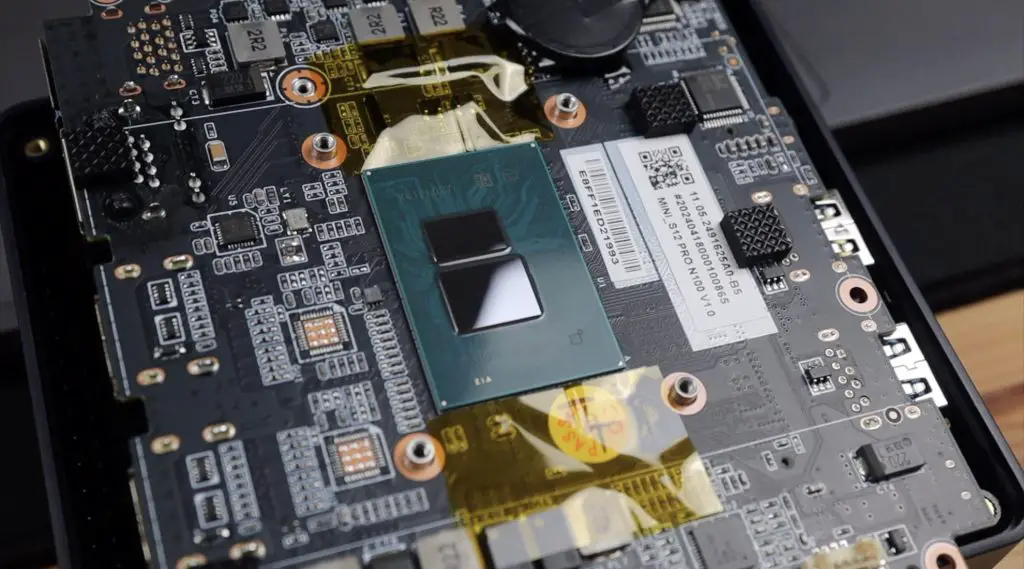
If you don’t know what an N100 PC is. It’s a PC, often in a mini PC form factor, that is built around Intel’s Alder Lake N family, and in this case the N100 CPU. For a long time, Rapsberry Pi’s were substantially cheaper than any newly available Intel hardware, but Pi’s have since crept up in price and this series of processors are now cheap and efficient enough to close that gap to the point whether they’re becoming quite comparable.
Here’s my video of the comparison, read on for my write-up;
Parts Used For This Comparison
- Beelink Mini S12 Pro N100 Mini PC – Buy Here
- Raspberry Pi 5 – Buy Here
- Pi 5 Active Cooler – Buy Here
- Pi 5 Power Supply – Buy Here
- Pimoroni NVMe Base – Buy Here
- Lexar NVMe SSD – Buy Here
- Main Power Meter – Buy Here
Pi 5 & N100 PC Setups Being Compared
For this comparison, I’m going to be using the following two setups.
The Pi 5 is an 8GB variant and I’m going to be booting it up from a Pimoroni NVMe base with a Lexar 500GB NVMe SSD. I’ve also added an official active cooler and power supply which, along with the NVMe base and storage drive, comes to a total of $160.
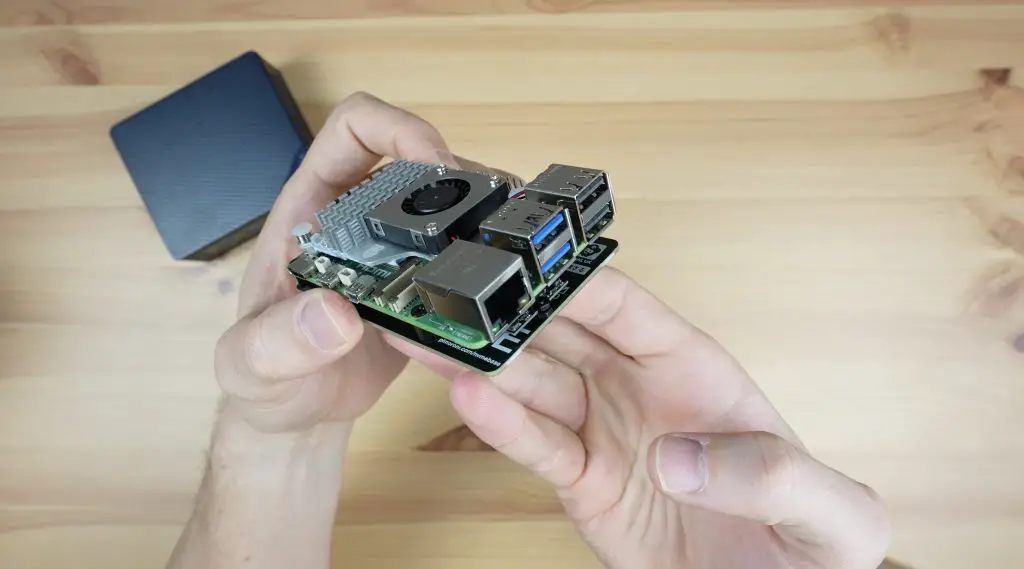
The N100 PC I’ve chosen is the Beelink Mini S12 Pro. This was on special for $159 when I bought it, so it was one of the cheapest options available on Amazon at the time. There were two cheaper options for $154 and $155 but I didn’t recognise either of these brands and I’ve used Beelink products before without any issues so I was happy to pay the extra $5.
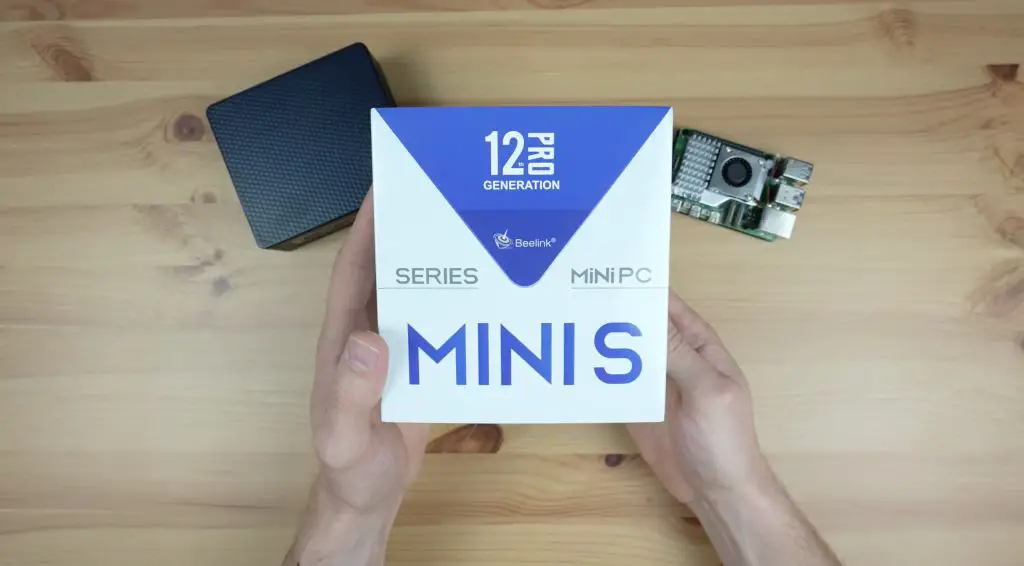
So pricing between the two is really similar once you’ve added all of the required components to the Pi 5 and with the N100 we’re getting double the RAM and an included enclosure.
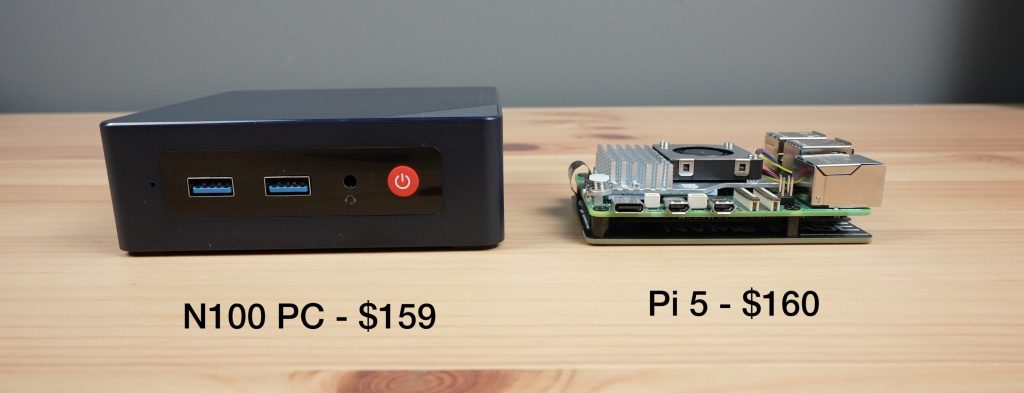
In terms of basic specifications, the Pi 5 has a Broadcom BCM2712 SOC which has a 4-core Arm A76 processor running at up to 2.4Ghz. It’s also got a Videocore VII GPU.
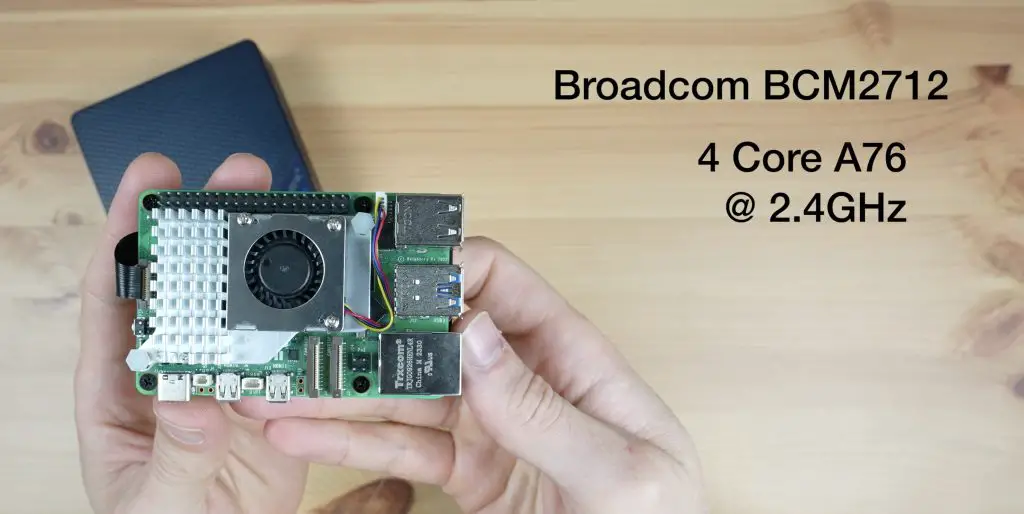
The N100 has 4 4-core Alder Lake N processor running only Intel E cores at up to 3.4GHz and integrated UHD graphics.
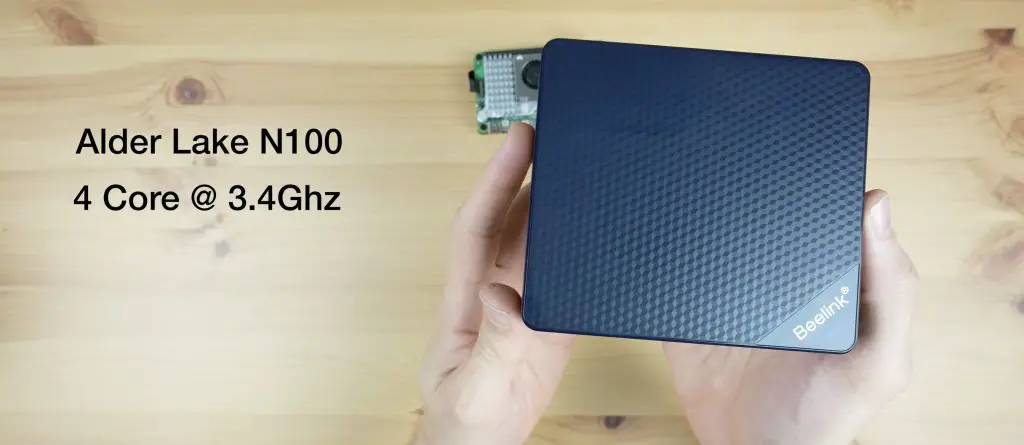
Both of these computers have DDR4 RAM. The Pi 5 has 8GB running at 4267 MT/s and the N100 PC has 16GB running at a slower 3200 MT/s.
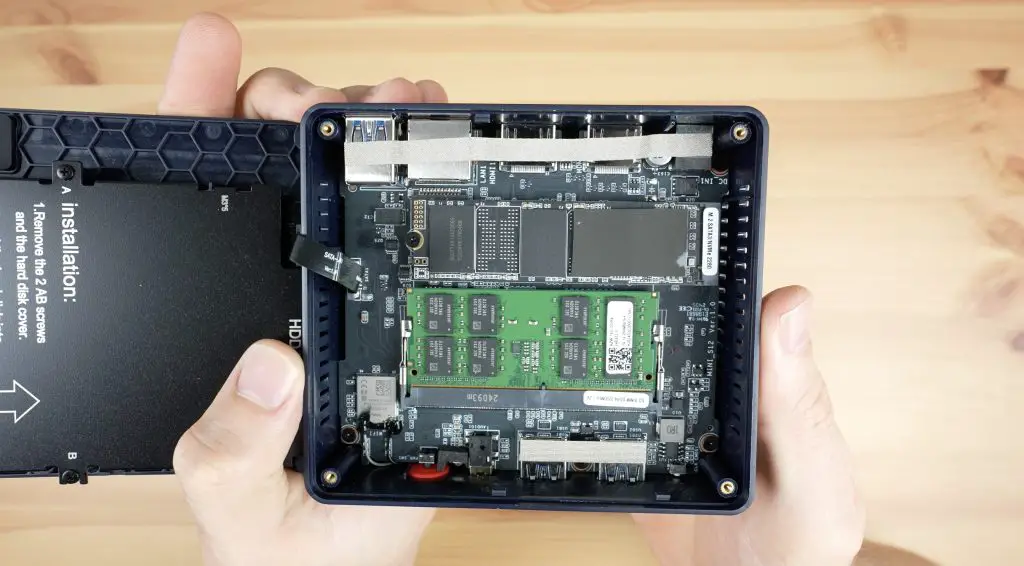
In terms of storage, both have a 500GB NVMe SSD.
Both computers have similar connectivity options – Gigabit Ethernet, two HDMI ports and four USB ports, although two on the Pi are USB 2.0 instead of all four being USB 3.0 like on the N100 PC.
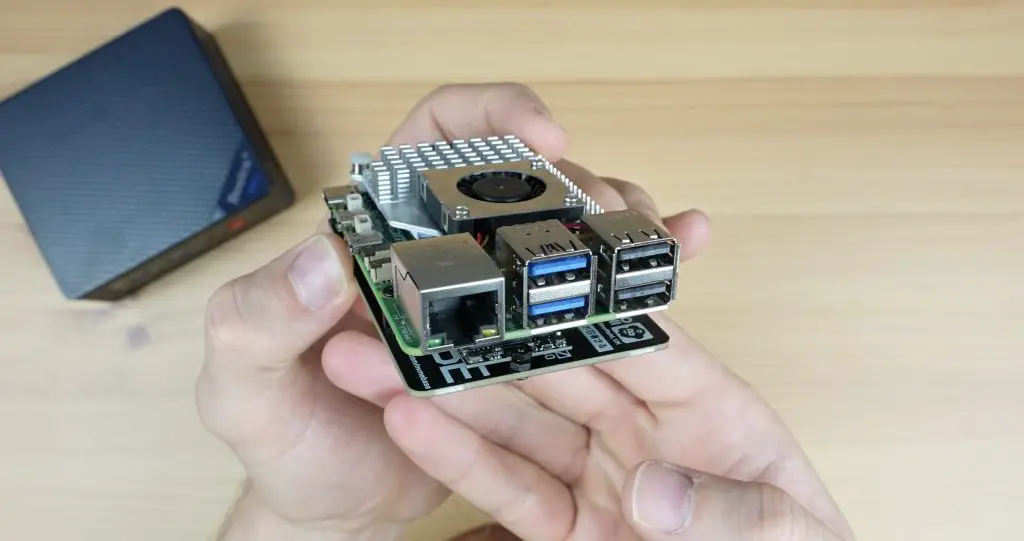
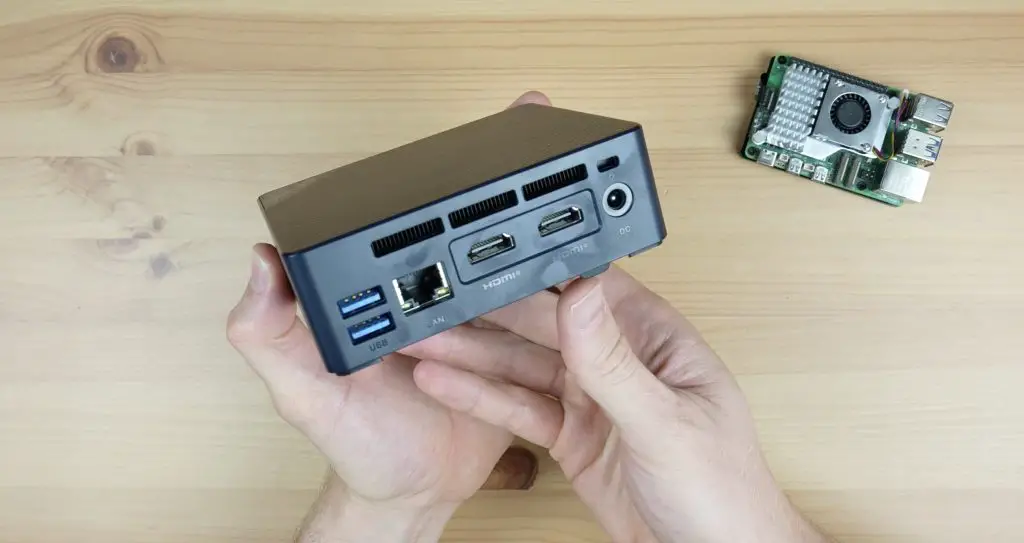
They both have an M.2 port for an NVMe drive but the N100 also has a SATA port for a 2.5” drive and the Pi has a couple of other interfaces like dual 4-lane camera/display transceivers and a 40-pin GPIO header – we’ll discuss this in a bit more towards the end of the comparison.
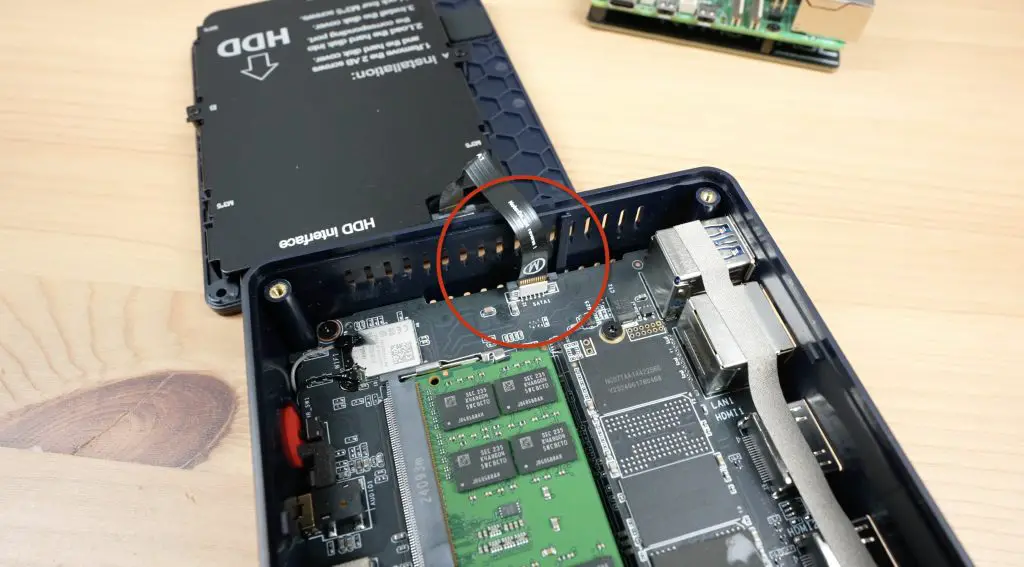
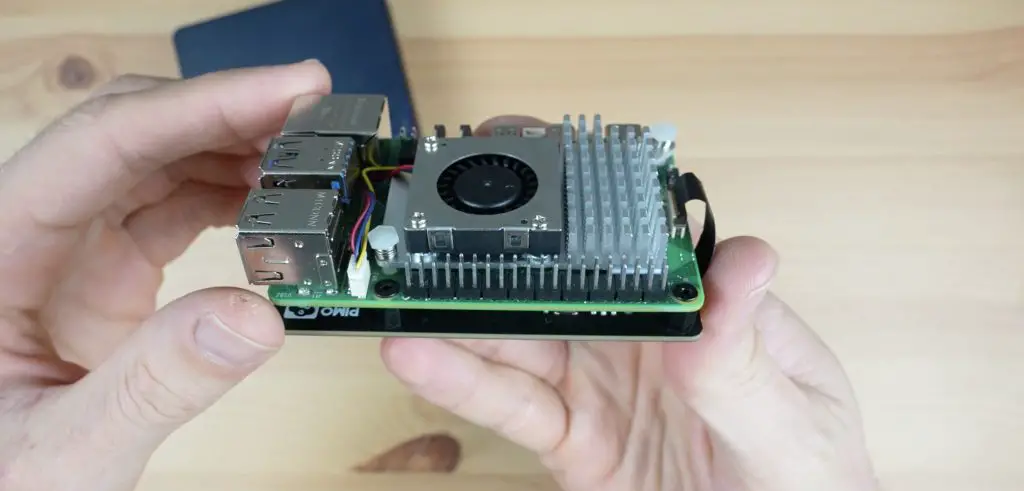
The Pi 5 has a single PCIe lane that can run at gen. 3 speeds, to which the NVMe drive is connected. The N100 PC has a built-in M.2 port which makes use of 2 PCIe lanes also running at gen. 3 speeds. So we’d expect the storage speed on the N100 PC to be quite a lot faster than the Pi.
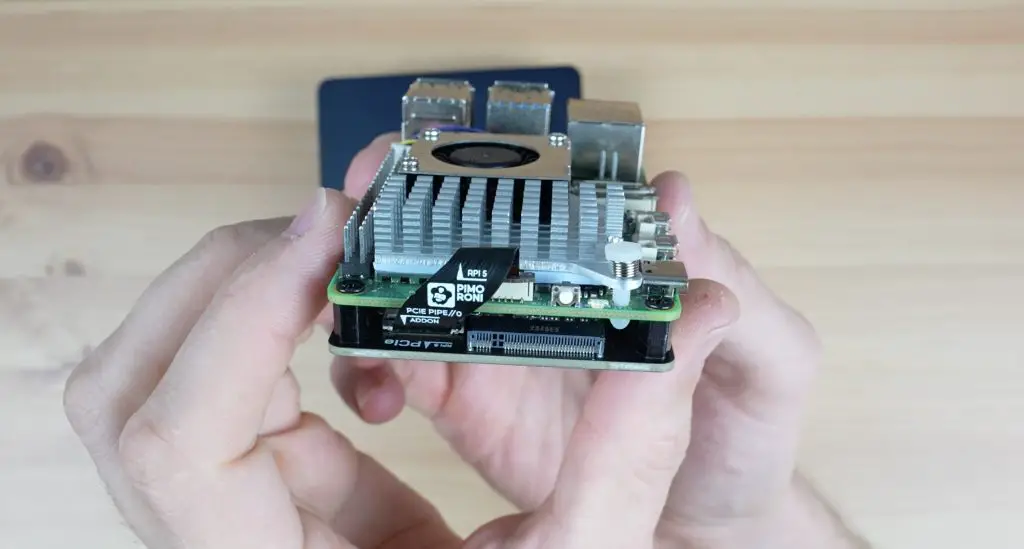
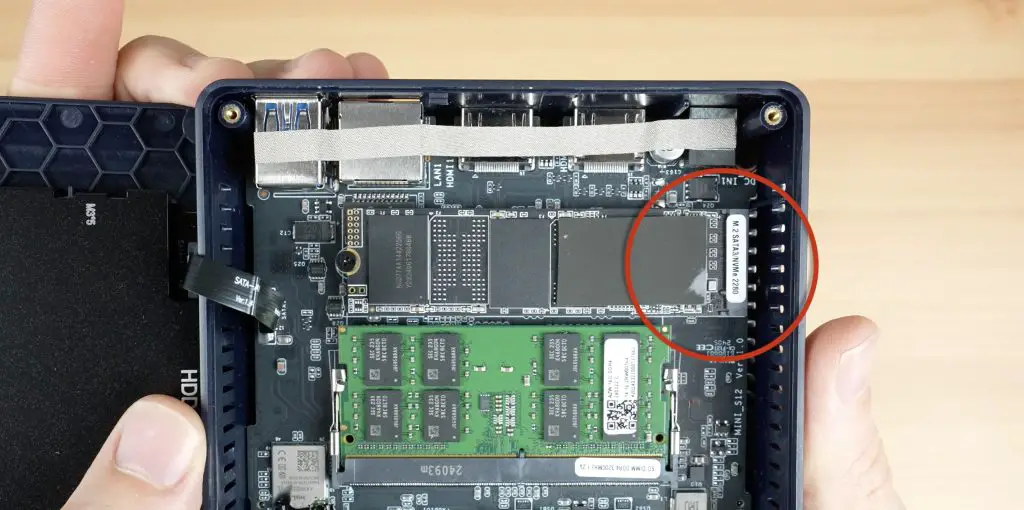
Perhaps the most significant difference between the two is that the N100 is an Intel X86-based system while the Pi 5 is an Arm-based system, so you’ve got far more options for compatible operating systems on the N100 PC than on the Pi 5.
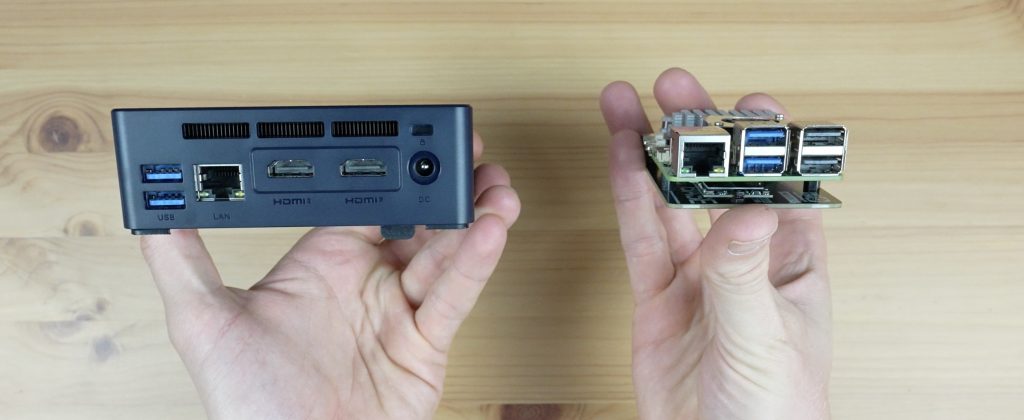
To make testing fair, we’ll be running Ubuntu on both since Ubuntu Desktop 24.04 is available as an officially supported OS through Raspberry Pi Imager and is available for the N100 mini PC as well.
Testing The Pi 5 & N100 PC
To compare the performance of the two, we’re going to run the series of tests below. These should give us a pretty good idea of the capabilities and limitations of each system.
- Video Playback at 1080P in a Browser
- A Sysbench CPU Benchmark
- An NVMe Storage Speed Benchmark
- GLMark2 GPU Benchmark
- Power Consumption Test
Video Playback at 1080P
Let’s start with video playback at 1080P.
The Pi 5 struggled with this more than I expected it to. It stuttered badly and dropped a significant number of frames at the beginning. Even once playback settled, it still continued to drop frames.

From my experience, the Pi 5 handles video playback in Raspberry Pi OS, which is based on Debian, without any issues, so this is most likely a software issue.
The N100 PC had no problem playing back the 1080P video. Playback was smooth right from the start and was unaffected when running in the window or fullscreen.

So both can handle 1080P video playback but the N100 PC is much better at it.
Sysbench CPU Benchmark
Next, let’s run a Sysbench CPU benchmark. I ran three tests on each computer and then averaged the scores.
I ran the following test on each of the computers;
sysbench --num-threads=4 --test=cpu --cpu-max-prime=20000 --validate runThe Pi 5 managed an average score of 40,359
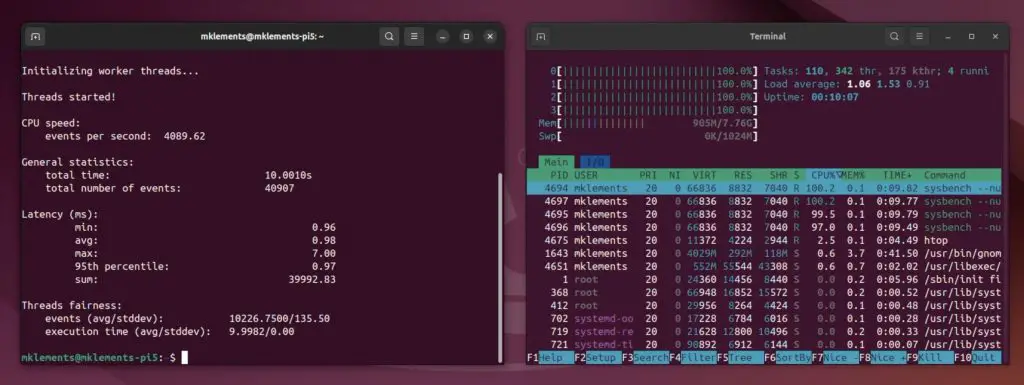
- Actual scores – 40907, 40023, 40148
The N100 PC managed an average score of 44,058
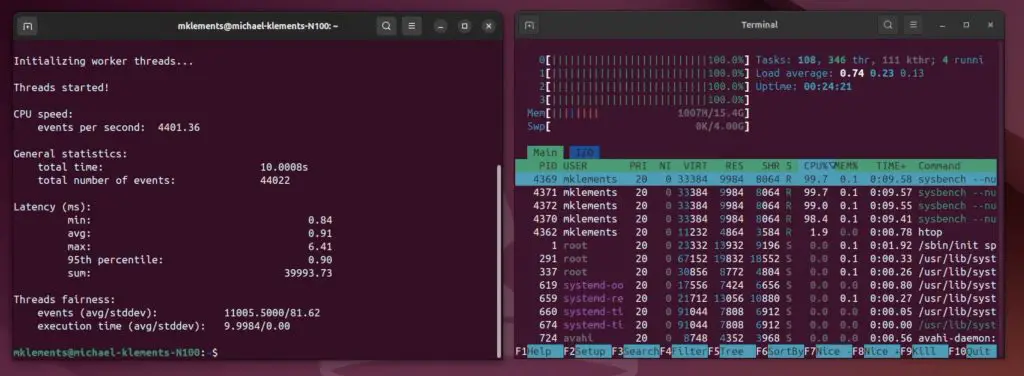
- Actual scores – 44022, 44096, 44056
So the N100 PC was about 9% faster than the Pi 5. This is not as significant as I was expecting given the much higher clock speed on the N100’s cores, but there is a small CPU performance gap between the two.
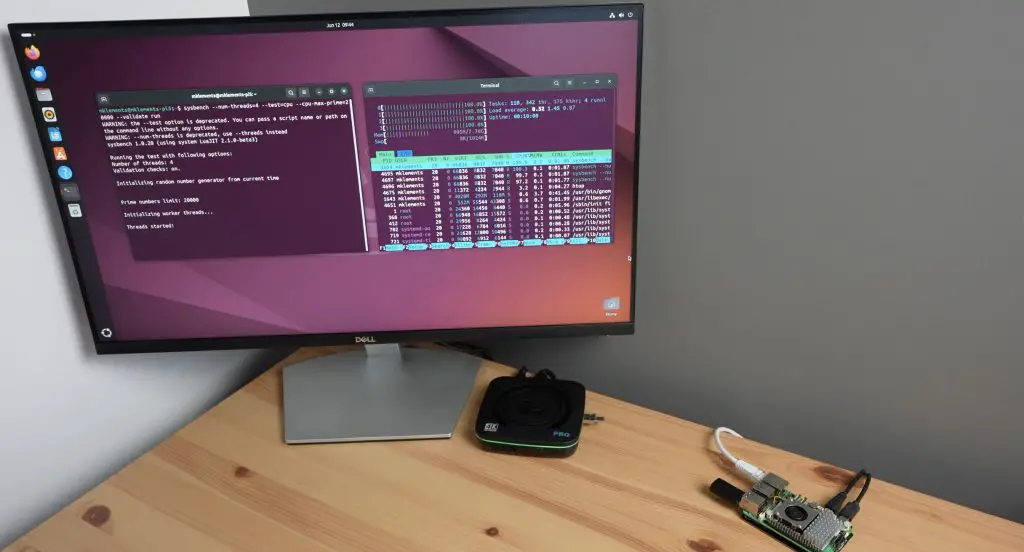
The N100’s results were also far more consistent than the Pi 5, which may suggest that the Pi encounters some sort of thermal limitations when running the tests in quick succession.
NVMe Storage Speed Benchmark
To test the NVMe storage speed, I used James Chamber’s Pi Benchmarks script. This script favours random read/write performance, so is a good representation of how an operating system would make use of the drive.
To run the test, enter the following command in the terminal;
sudo curl https://raw.githubusercontent.com/TheRemote/PiBenchmarks/master/Storage.sh | sudo bash
Over three tests, the Pi 5 managed an average score of 32,089 with average sequential read speeds of 423MB/s and average sequential write speeds of 241MB/s.
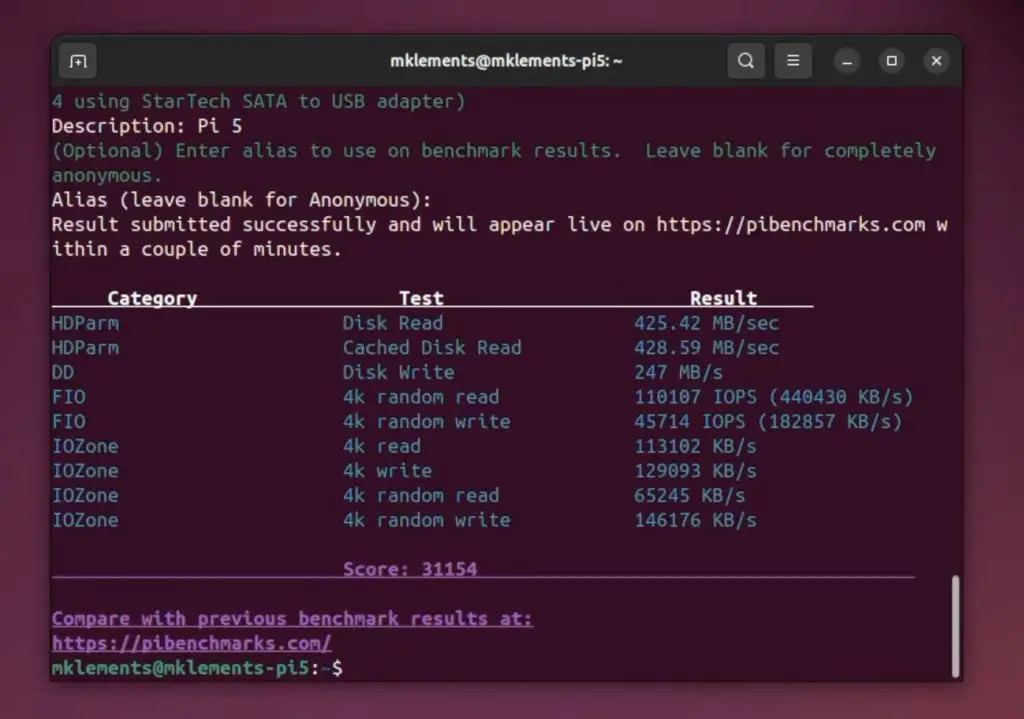
- Actual scores 31154, 32431, 32683
- Actual read speeds 425, 432, 412
- Actual write speeds 247, 239, 237
The N100 PC managed an average score of 44,803, so significantly higher than the Pi 5, with an almost 40% improvement. Average sequential reads were around 673MB/s and average writes 495MB/s.
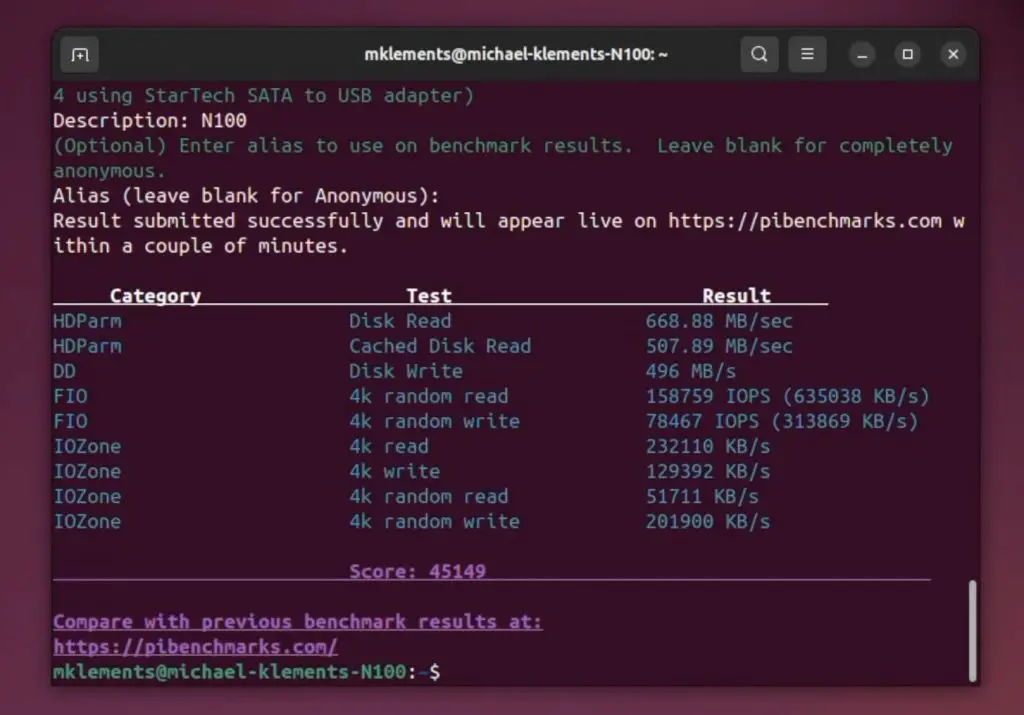
- Actual scores 45149, 44992, 44267
- Actual read speeds 668, 669, 683
- Actual write speeds 507, 491, 487
GLmark2 GPU Benchmark
The N100 has a much more powerful GPU, so I expect it to do a lot better than the Pi in our GLMark2 GPU benchmark.
This benchmark needs to be downloaded and built from source code, and is then run by entering the below command in the terminal;
glmark2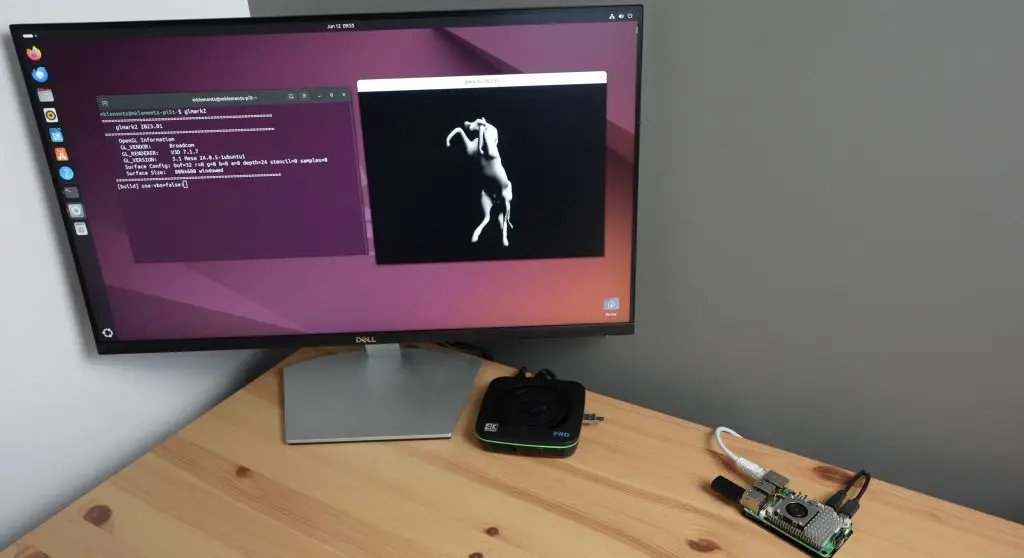
The Pi 5 managed a score of 307.
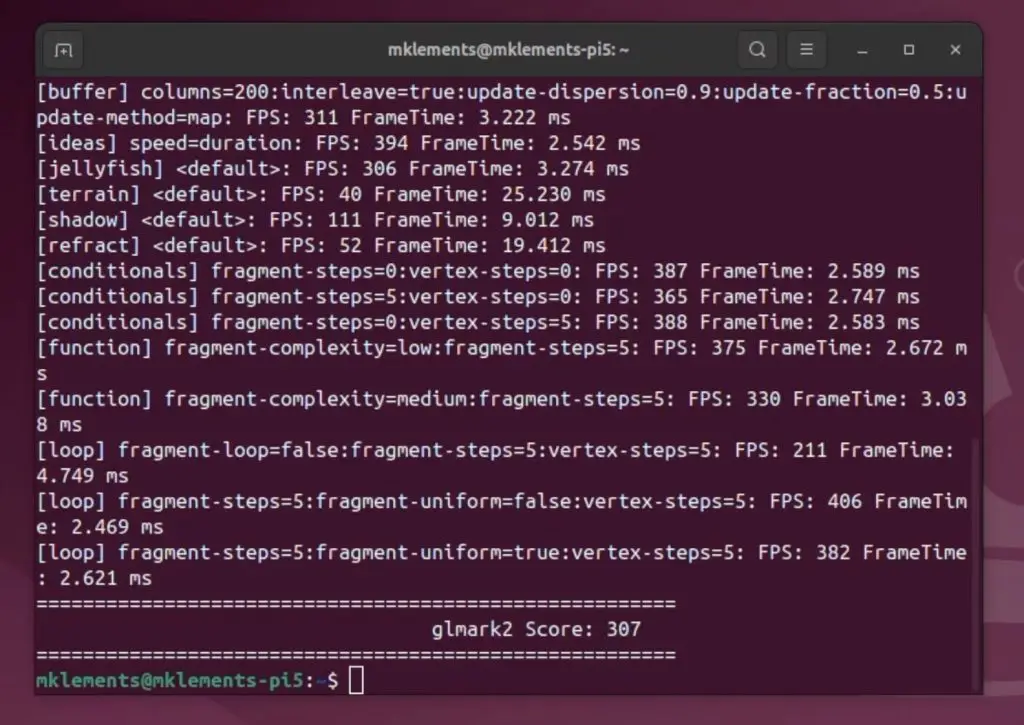
The N100 PC managed a score of 2070.
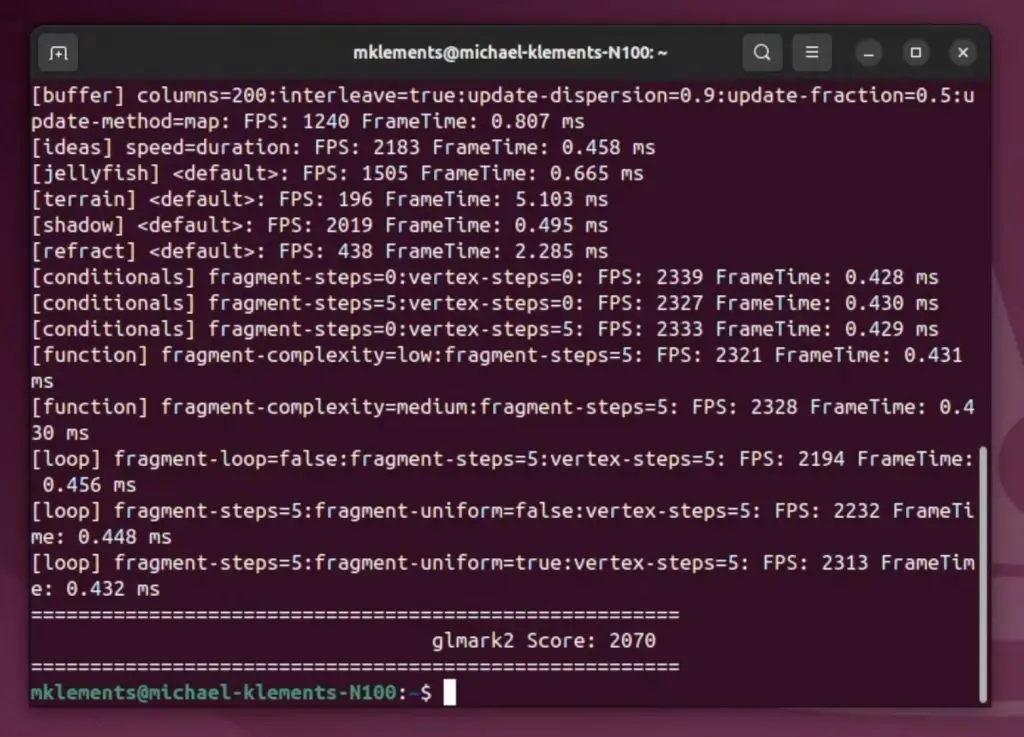
So the N100 is over 6 and a half times faster than the Pi 5 in GLMark2, which is obviously a substantial difference.
Power Consumption
Lastly, let’s look at power consumption. This is where I have high hopes for the Pi to stand out.
At idle the Pi 5 uses around 3-4W, and this goes up to 8-9W under load.
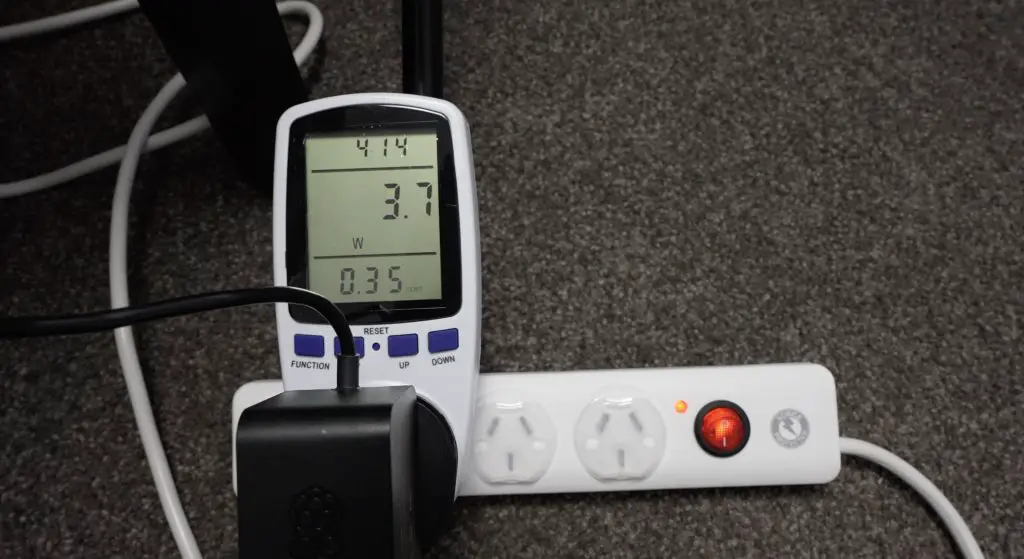
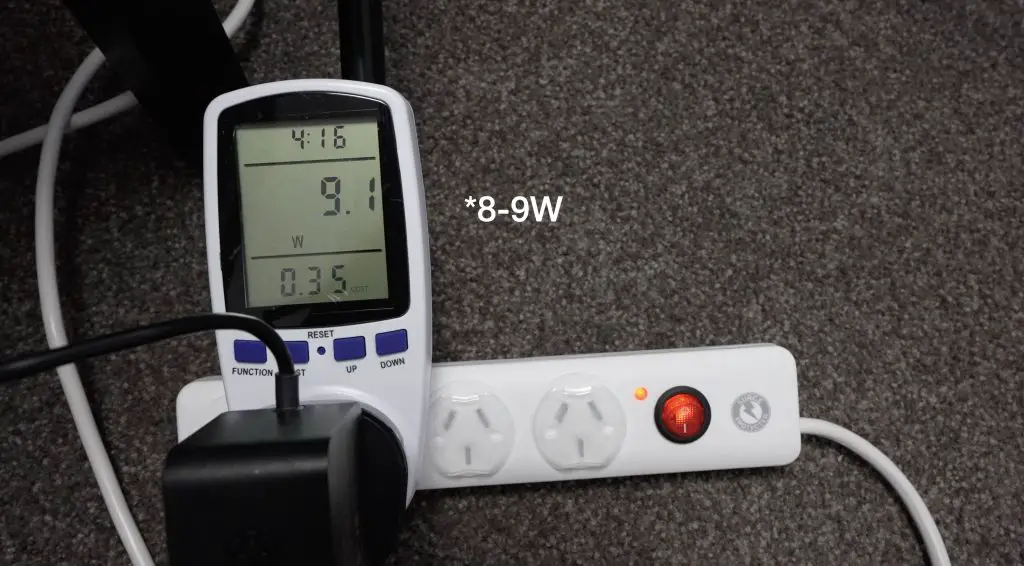
The N100 PC uses quite a bit more power, using 8W idle on the desktop and up to 27W under load.
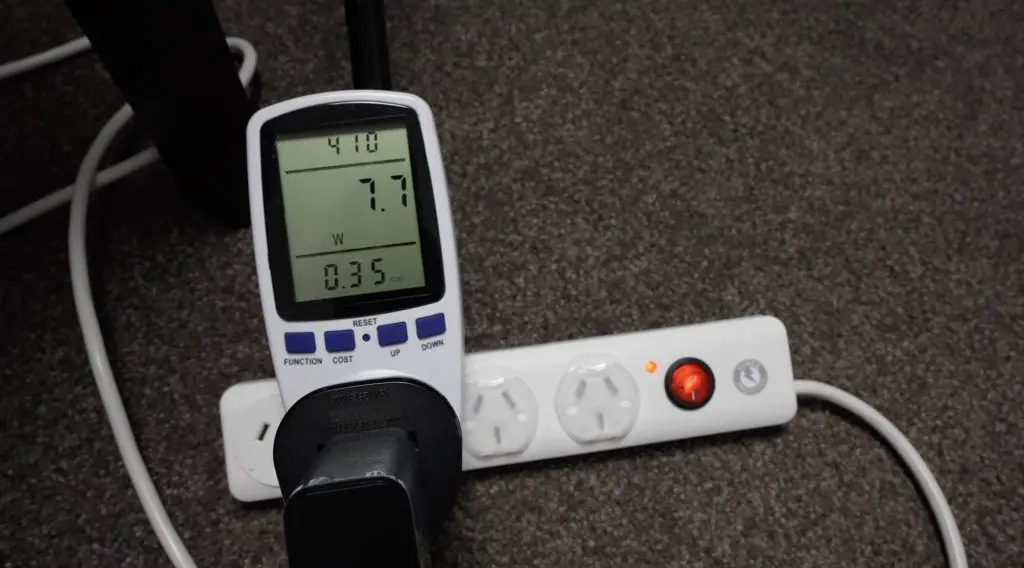
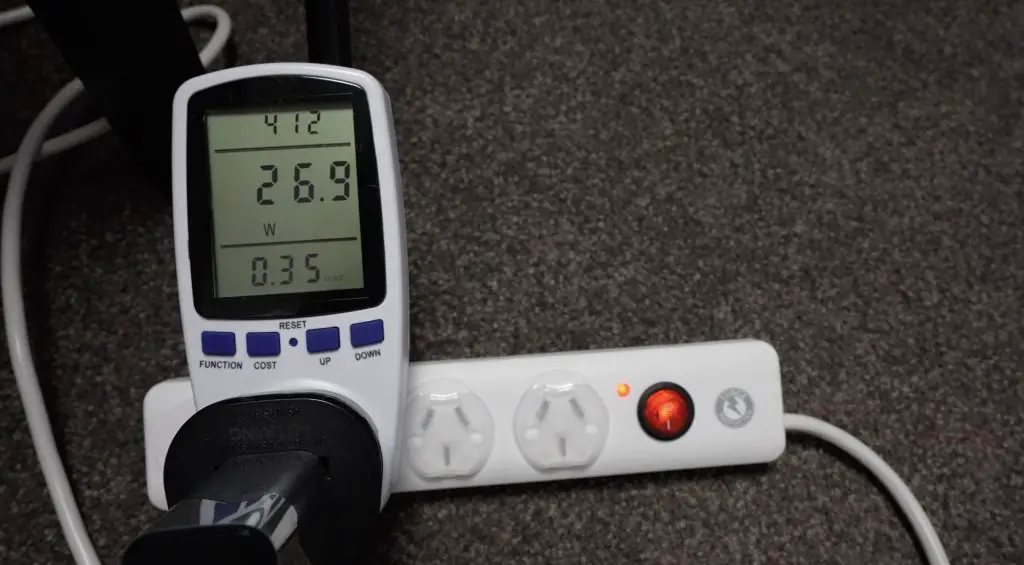
While neither of these figures are particularly high, it’s worth noting that the N100 uses nearly four times the power of the Pi 5. This probably makes little difference on mains but for battery-powered projects that are required to run for many hours or even a few days, the difference can lead to substantial savings in power supply hardware and batteries. This is not all that surprising – ARM computers are known to be power efficient, which is one of the reasons they’re so popular for mobile devices.
Conclusion & Final Thoughts
So, the N100 PC beats the Pi in almost every performance benchmark and comes in at a similar cost.
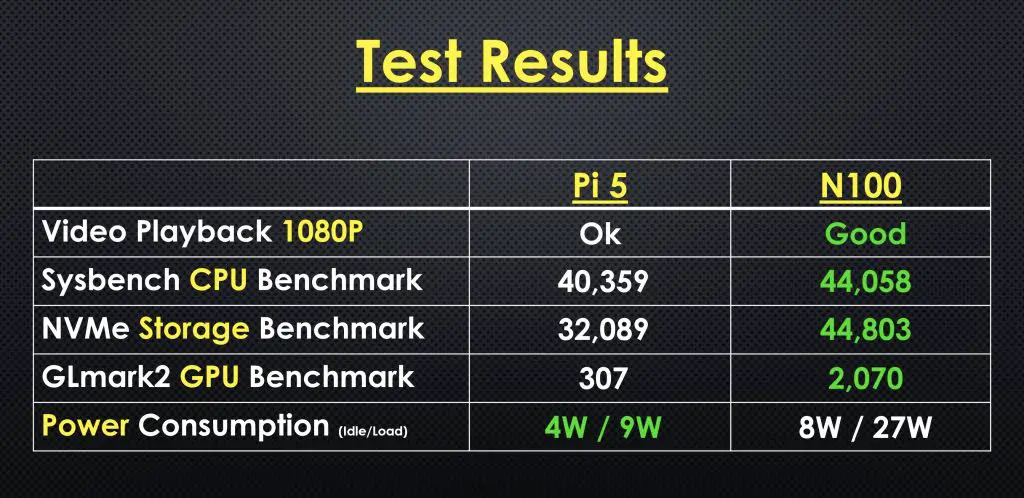
One of the main reasons that people list for getting a Pi over an N100 PC is the GPIO pins, and these are without question much easier to use on the Pi. The GPIO pins are literally available right on the board and there is a wealth of software and tutorials available to utilise them.
That doesn’t mean that you’re out of options for the N100 PC. Microcontrollers like an Arduino Pro Mini or Nano, or even one of these purpose-built Adafruit FT232H USB to GPIO breakout boards make it equally possible to connect tiny OLED displays, read in information from sensors or just work through an introductory flashing LED tutorial on a PC, with relative ease.
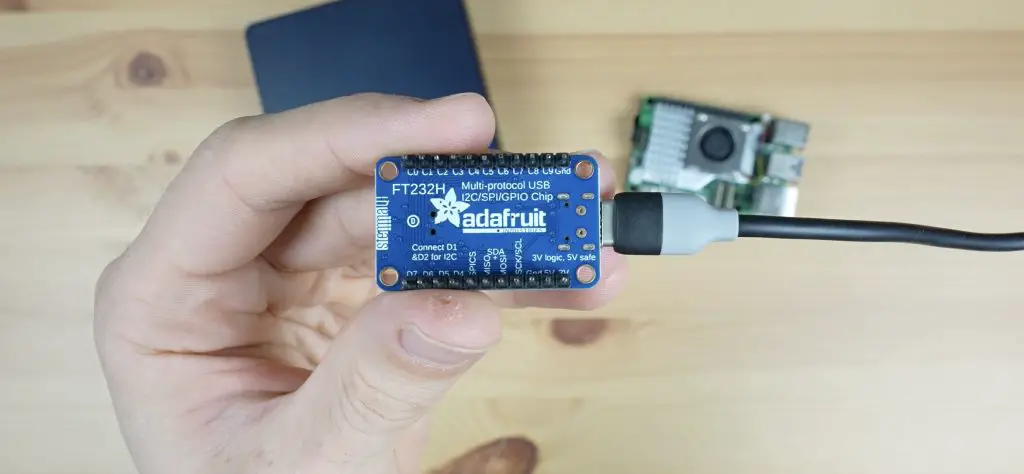
This is not as integrated as on the Pi and comes at an additional cost, but for a few dollars might be worth it if you’re just getting started tinkering with electronics.
So, if you plan on using the computer for automation or robotics with a reliance on the GPIO pins then the Pi 5 is the better option, but for experimenting with home server projects, running anything reliant on a GPU, or getting started with Docker or Kubernetes then the N100 mini PC is a great alternative.
I think Raspberry Pi have missed the mark a little with the pricing of the Pi 5. If you are just looking for a cheap computer to get into tinkering with electronics projects then you’re probably better off going for a base version of the Pi 4. This still has plenty of CPU power to run projects locally and you’ll have access to a similar set of IO to the Pi 5 but without the additional cost. After all, a big part of the initial attraction to Raspberry Pi’s was the $35 base price!
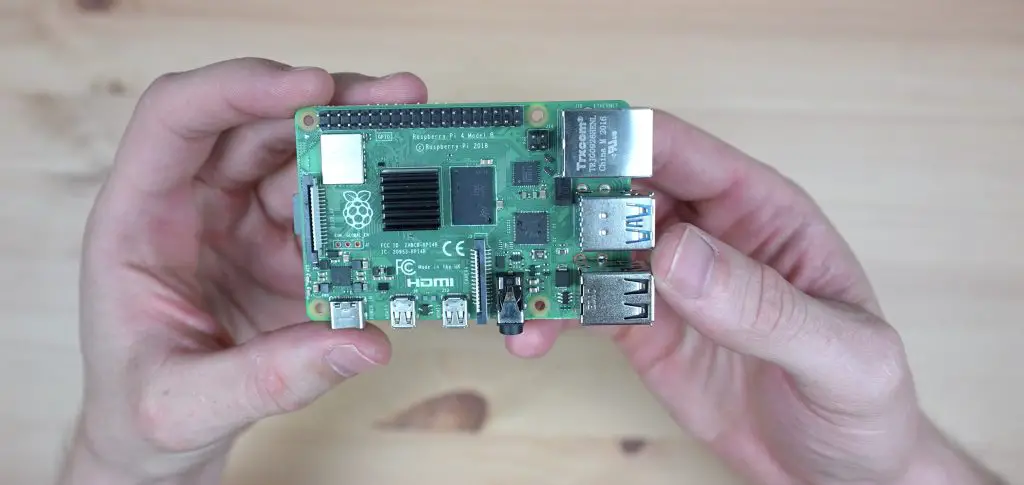
Let me know which you prefer and what your use case is in the comments section below.


It’s not surprising that the answer to the headline question is “It depends what you want to do.” There’s no doubt the whole Raspberry Pi ecosystem – hardware, software, add-ons, forums, user support – serves the hobbyist pretty well and those that are already part of the system will want to continue with it. There’s also no doubt that the x86 system can serve other specific uses pretty well.
I agree that the Pi5 is venturing into the sort of territory where it isnt good value for money. However, many hobbyist projects could still make us of a 1 or 2GB Pi4 starting at just over half the cost of a Pi5. My Pi media player/server will run quite happily on a Pi 3 with 1GB of RAM and I’m only using a Pi4 because it was easier to get a nice case to contain the board and DAC HAT. I might get a new 1GB Pi4 for it so that I can use the 4GB one for something else.
Thanks for the article and the comparison. I never realized this Beelink was that small.
Well done Michael.
I think the thing that identifies which is better most easily is the job that the system will be used for.
The Pi barely scraped in, pricewise, but by the time you add a case, power supply and accessories to turn it into a “computer”, it will be way more expensive than the Beelink.
The Beelink offers a lot for the money, requiring possibly only a keyboard, mouse and monitor to get it up and running as a “computer”..
The Beelink I think takes the lead if you were in the market for a media-centre PC or headless server. GPIO is not important, but GPU & CPU performance likely are.
The Pi takes the lead if you want to learn about electronics and the like. GPIO is important, but overall, it’s a much simpler system to work with when learning.
I think the thing to do is identify the job that the computer is required to perform & then select the best platform to carry out that job.
Thanks for your thoughts Chris. I agree, each has it’s strength. The part I struggle with the most is that if GPIO and electronics projects are your goal then a Pi 4 is far better value and raw performance is not all that important.
Thanks. Are there any ARM-based alternatives to the Pi 5 you would recommend? Also, are there any Mini-PCs that have passive cooling and use less power? At the current energy prices in Europe 5W more or less 24/7 do make quite a difference over the time of a few years – and that’s the main reason I’m still considering upgrading from my Pi 4 to a Pi 5. Thanks.
It depends on your use case. There are a lot of RK3588 based SBCs which have much better performance than a Pi 5, but they generally lack good software support. If you have a fairly simple project or there is a OS image available for the board you want to use then these are great alternatives.
Do the N100 boxes do HDMI CEC?
Not this particular one